A Few Curtain Making Basics
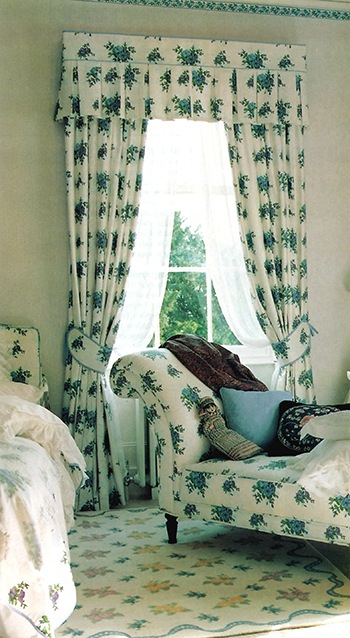
These blue and white chintz, tailored floor-length curtains have been partnered with the full range of window dressing—boxed pelmet with a pleated valance, sheer curtains and tailored tie-backs. When curtain making piping adds a crisp finish to tie-backs and pelmet.
Parts of curtain making basics are curtains, pelmets and valances that transform a room. To be really effective, they need to be planned carefully. Even using curtains on their own gives a variety of different effects, depending on the fullness and length of the curtains, the heading tape used, and the type of pole or track.
Choosing curtain tracks
1. Pick a strong enough track,
lightweight for sheers and unlined cottons; medium weight for standard sill-length curtains; and heavyweight for floor-length or heavy, interlined curtains.
2. If the track has to go round corners,
as in a bay or bow window, choose a flexible plastic track or a metal track fitted with sections which can be easily slotted together as required.
5. If the track is covered by a valance or pelmet,
it doesn’t need to be elaborate, but if the track is on display, pick one that will fit the decor and the style of the curtains.
6. For maximum light
and to reveal the shape of the window, allow extra track at each side so the curtains can be pulled back. The amount of extra track will depend on the thickness of the curtain and the space available. Generally 15-46cm (6- l8in) at each side will be sufficient.
7. Check that you have everything you need.
Tracks are usually bought as a complete kit with screws, brackets, overlapping arms (where necessary) curtain hooks and gliders. However, there may be optional extras.
8. Follow Instructions
Always follow the fixing instructions supplied with the track, making sure that the end fixings are strong and that there are sufficient holding brackets in between to prevent the track from sagging. To save time, check through all the fittings first, so that you are familiar with them. If there is a concrete lintel above the window or the wall is badly plastered, the track will have to be mounted on a wooden batten fixed above the window for a level result.
A Brief History Of Curtains
A curtain is a piece of cloth intended to block or obscure light, air drafts, or (in the case of a shower curtain) water. A curtain is also the movable screen or drape in a theater that separates the stage from the auditorium or that serves as a backdrop/background.
Curtains are often hung on the inside of a building’s windows to block the passage of light. For instance, at night to aid sleeping, or to stop light from escaping outside the building (stopping people outside from being able to see inside, often for privacy reasons). In this application, they are also known as “draperies”. Curtains hung over a doorway are known as portières. Curtains come in a variety of shapes, materials, sizes, colors, and patterns. They often have their own sections within department stores, while some shops are completely dedicated to selling curtains.
Curtains vary according to cleanability, ultraviolet light deterioration, oil and dust retention, noise absorption, fire resistance, and life span. Curtains may be operated by hand, with cords, by press-button pads or remote-controlled computers. They are held out of the way of the window by means of curtain tie-backs. Measuring curtain sizes needed for each window varies greatly according to the type of curtain needed, window size, and type and weight of curtain.
Curtains are a form of window treatment and complete the overall appearance of the interior of the house. Window treatment helps control the ambiance and flow of natural light into the room. The effect of drapery or curtains is best seen in daylight, and with proper indoor light positioning, can look attractive even at night.
History of Curtains from Wikipaedia
Reference: The Country Look—Decor & Crafts


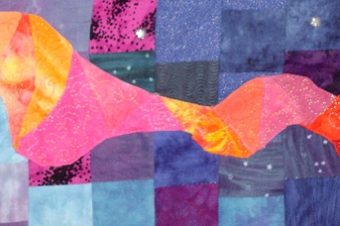
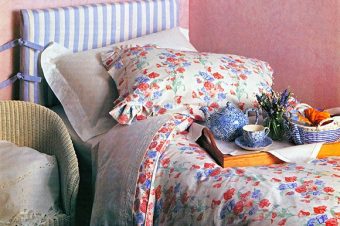

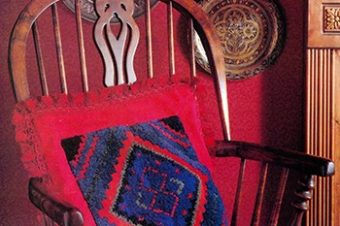

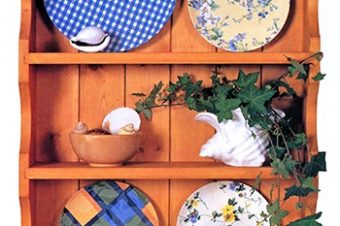
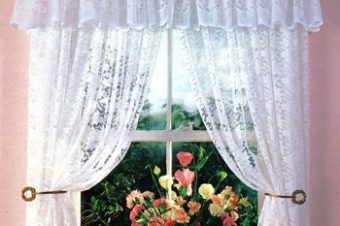

2 Responses
Moore, Ron
Hey I wanna know what I can decorate my new room at my new house with. I basically have the cellar to myself which is my room which is pretty good sized. And two other small rooms. Plus a closet. I was thinking of making one room into a movie room and make it completly dark and putting the T.V with all the DVDs and stuff in there and then have pictures of like Merilyn Monroe/James Dean/Star Wars/ random movie photos on the wall to set the scene. Then the other small room is going to be a small bathroom that I dont know how to decorate yet. Then my room will just have my bed and books the small computer dest and a make-up birrow and dresser. There will be alot of wall space so how can I decorate? ANy of the rooms? I want some fun ideas to make my room unique like the picture buliten board and picture clothes line and glow in the dark start. What other accesories can I put in it? I’m a teenage girl…more details below
I can be really preppy and girly sand I love shopping all the time. But I’m also verry guy-ish and I sometimes just like to hang out and be alone. I love my privacy. I like to read. I <3 my friends and family and memories. I love nature it makes me happy. Cool lights are fun. I like to have things verry dark. I love music, all types from Eminem to Billy Joel to Taylor Swift and Alanis Morissette and the Corrs. Every type of music I love. Especially old music. I love dance and basketball. I dont want a single theme for my room. I was thinking of painting the walls green pink and blue really bright. What else could I put? I also love art and anime. What are some fun ways I can decorate any of the 3 rooms?
mmminja
DON’T SAY I CAN’T! I BELIEVE IN MYSELF, AND ANYTHING IS POSSIBLE.
Yeah, I’m only 13. But I REALLY want to become a fashion designer!
The upside:
– I have over ten sketchbooks, many of which are full
– I have made multiple items before
– I have a high quality Janome sewing machine
– I have a good camera to take pictures of the outfits
– I think I have good drawing skills, my friends and family think I do
– I have been researching good design schools and universities
– I can sew clothes that fit me without a pattern
The downside:
– I don’t know how to make a pattern, and using them are a little confusing 🙁
– Sometimes the clothes I make look a little unfinished/untidy
– I’ve looked all over Yahoo Answers and mostly found answers along the lines of “Wait until you’re out of school”, or they’re really awful answers saying that because we’re thirteen we have no idea how to do anything to do with the fashion industry, like how to sew or draw a piece of clothing or that we have no idea or the terms used in fashion. Hello, do you know what a croquis is? No probably not, but I do. I know what flats are (blueprints on how the garment is to be constructed), I CAN sew, I CAN draw. DON’T YOU DARE go downgrading us because of our age.
– Sorry for that rant ^^^
So basically I just want some tips about it, where to get information from etc. How can I improve my skills?
Oh, and don’t tell me to wait till college. I want to start now. Of course I’m going to go to fashion school, but I don’t want to have to wait 6 years
xoxo thanks for your help 😀 Grace
I live in Australia, I can’t go to a workshop at Parsons, or FIT or FIDM… do you know any workshops or Universities in Australia ? 🙂 xo